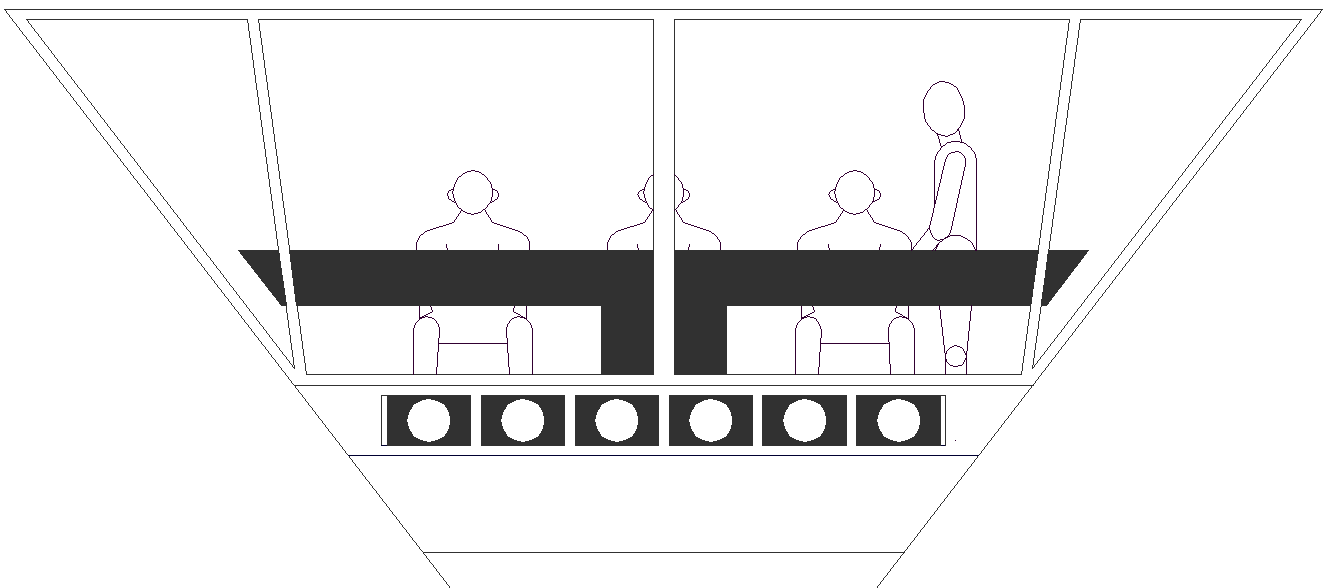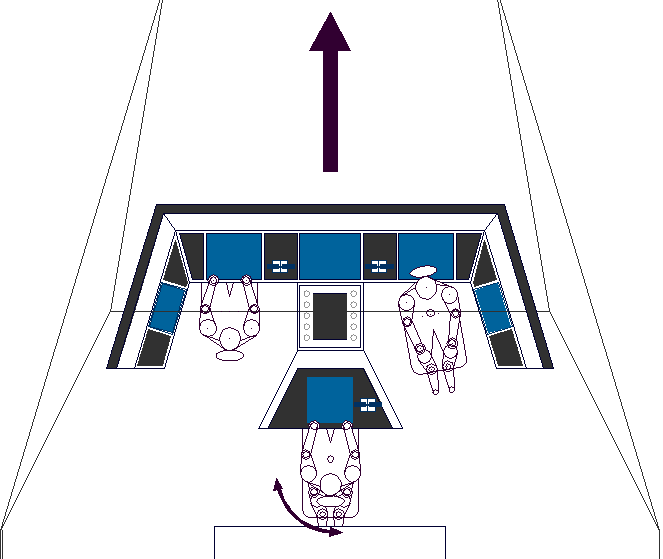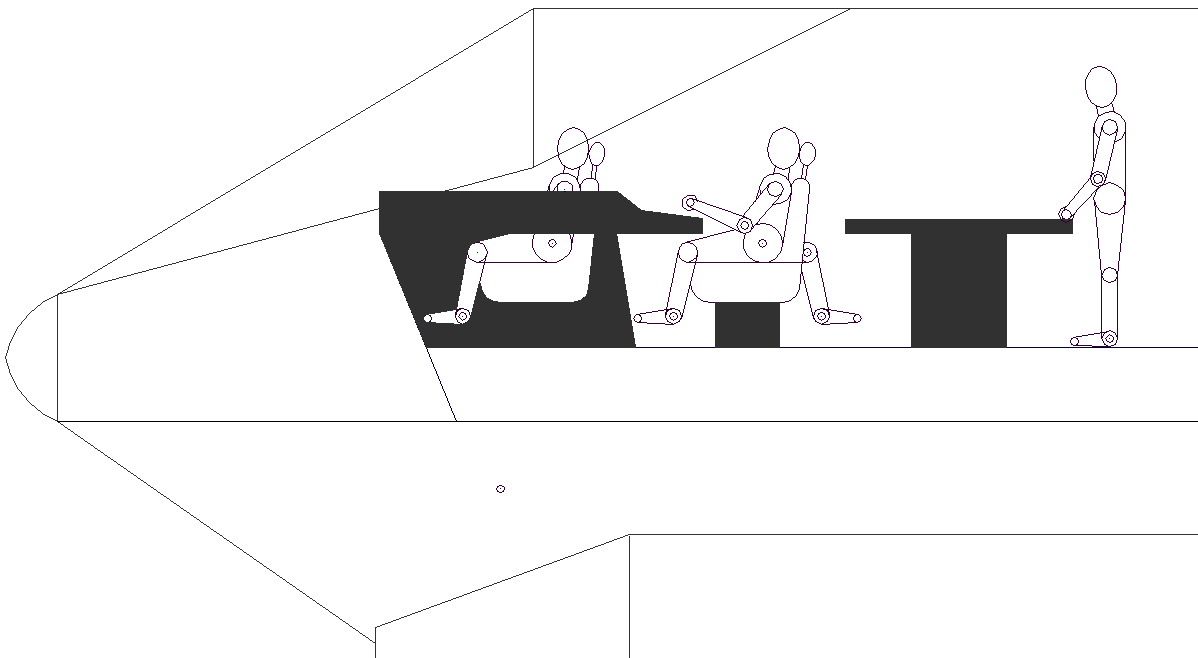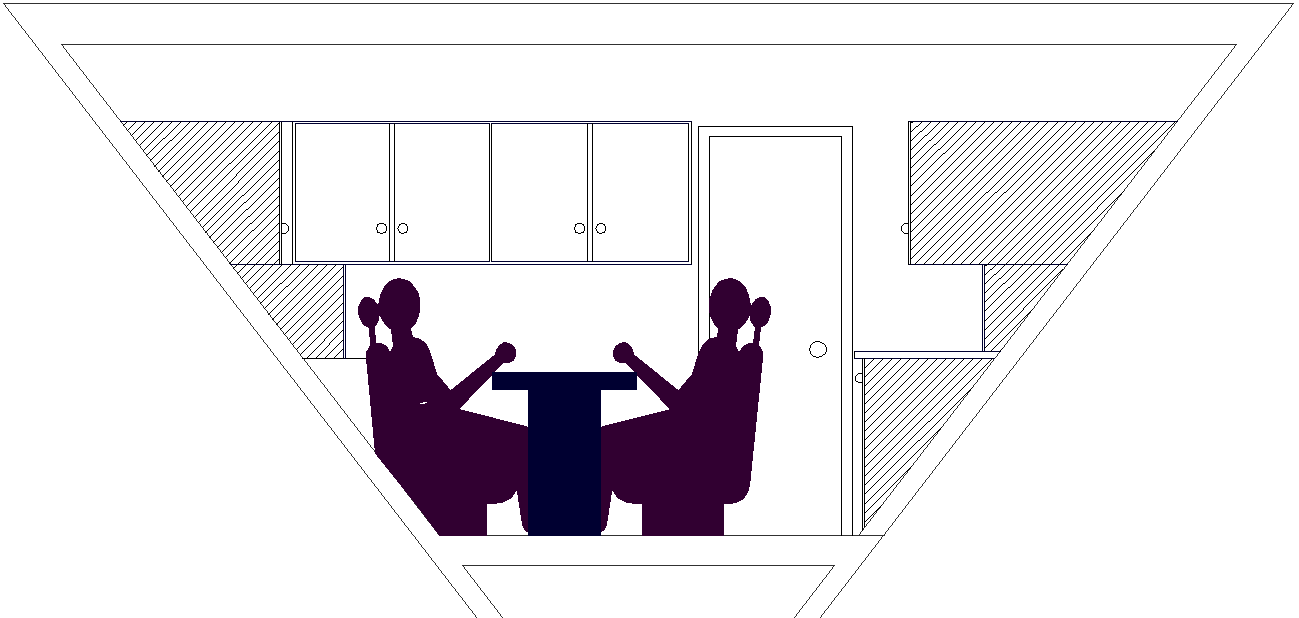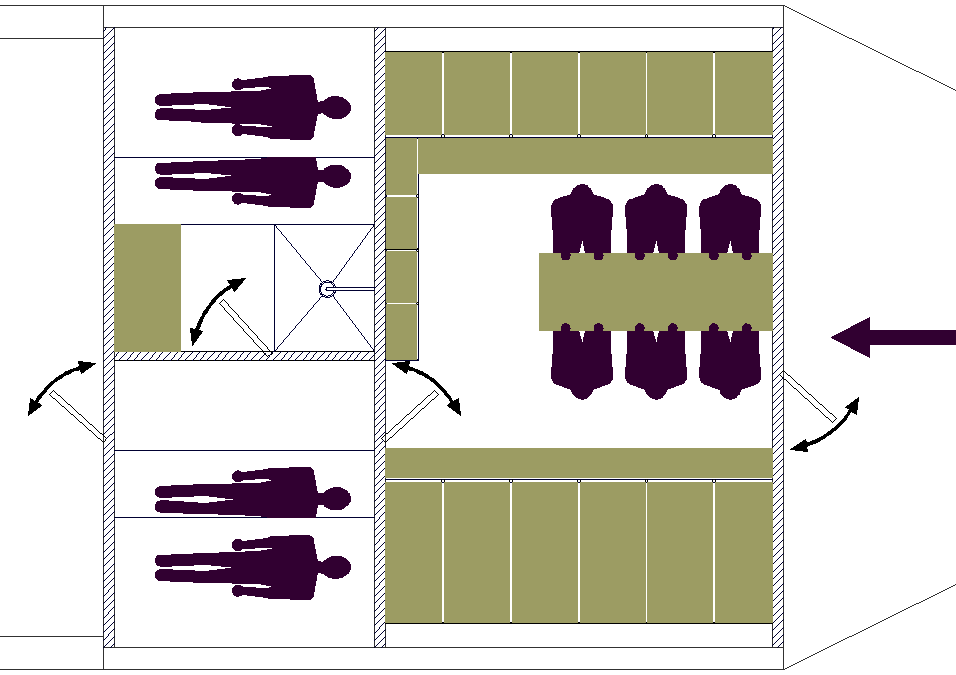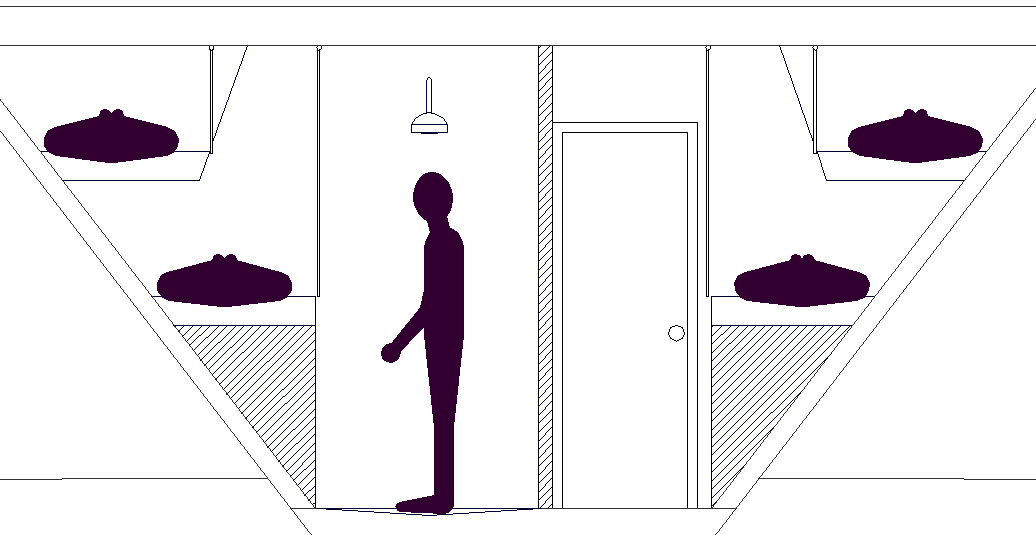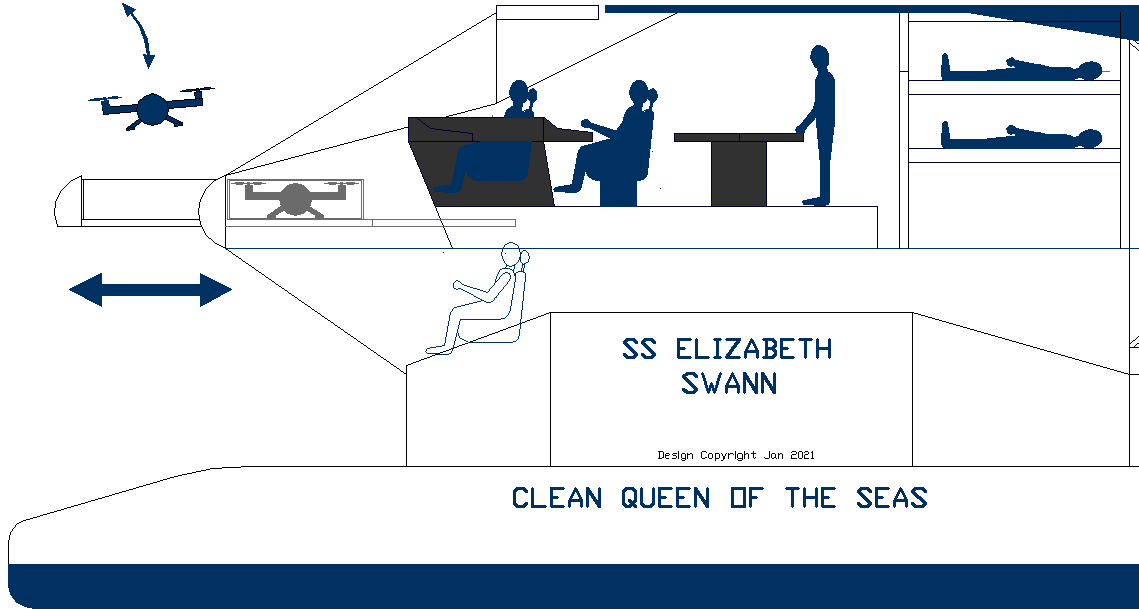|
INTERIOR, HELM, GALLEY, CABINS
Please use our A-Z INDEX to navigate this site or return HOME
|
HELM FRONT VIEW - This is how the forward helm looks to the outside world with the craft sailing towards them. Commonly called the bridge on larger vessels, this cabin would house the ship's wheel in days of old. The Swann does not have a large traditional wheel because the rudder is hydraulically controlled and docking is mostly by thrusters. She does though have manual control of the rudder when the situation demands.
The interior of any vessel should first and foremost be functional in the ergonomic sense. The most important area is the helm, for that is where the captain of the ship steers the craft out of harbours to new destinations. Without a helm, a ship is useless, unless it is autonomously controlled navigation wise.
On manned ships, the next most important area in the galley, followed by the sleeping quarters or cabins. And finally, we have the work areas, such as the diving platform and suit up areas. If, the vessel is a workboat, such as for fishing, then the boat is mostly given over to the catch and storage, etc.
On a ship like the Elizabeth Swann, where the vessel is one big experimental rig, then the helm plays a particularly important part in conducting such experiments. A happy healthy crew is a happy and productive team.
HELM PLAN VIEW - Spacious forward helm position, showing seating positions for three crew and a state of the art instrument console arrangement with digital displays. Behind the third (central) seat is a chart table that doubles for other general duties, since charts are largely irrelevant on a ship with autonomous navigation capabilities and electronic instruments. All of the electrically adjustable seats swivel for ease of access.
The crew may elect to navigate the Elizabeth Swann manually during scientific expeditions, or may engage an advanced autopilot named Captain Nemo, incorporating artificial intelligence (AI). Captain Nemo works with the ships robotic management system named Hal. Hal is a program that manages energy use, and the trim of the solar wings and wind turbine. Captain Nemo takes the ship from one waypoint to another by way of an autonomous COLREGs compliant navigation system.
The autonomous AI system may be disengaged at any time, with another feature being drone remote control via satellite from anywhere in the world.
Finally, the vessel is to include an auto-docking system for busy marinas and harbours, where the ship berths itself.
All of these technology features in combination, will allow vessels like the Elizabeth Swann to circumnavigate the globe without a crew onboard.
HULL DESIGN
The Swann is a unique yacht with a trimaran hullform designed for speed, using only energy harnessed from nature for its all electric propulsion system.
1. A single central submerged hull stabilized by outriggers - or Small Waterplane Area Triple Hull (SWATH), hence a trimaran.
2. A single central wave piercing hull stabilized by outriggers as a trimaran.
Both of the proposed hull designs share the same:
a) Ultra light superstructure purposed designed to harvest energy from nature via b) and c) below,
b) Solar wings that track the sun and fold for storms, in concert with
c) A turbine generator on a mast that tracks wind conditions and furls for storms.
HELM SIDE VIEW - Vision looking out to sea is excellent. Headroom is limited where the helm positions are on a raised platform, to allow for space below for monitoring of the ocean by other crew members who may be guest scientists: meteorologist, biologists, etc.
The galley is aft, along with an open cockpit (and helm) by way of a flying bridge, above the galley, and an open deck-level cockpit where diving gear is stored. There is a drop down hatch from the cockpit, to the centre hull, that forms steps, where suited divers can enter and return from the sea in relative comfort.
GALLEY & MESS - It is compact, but there is plenty of work space for meal preparation, and a table to seat all six of the crew, while the Swann in on autopilot.
ACCESS - A bit like on a submarine, there is a corridor that passes through the port cabin, from the open walkway, to the aft cockpit. With guests on board the crew will have to walk lightly through the joining walkways.
The mess area is aft, though a generous chart table forward has facilities to hold mugs and plates against crashing waves.
There are six berths, as bunks, in four separate cabin areas. Two berths are up front for short snatches of sleep, and four are aft. Front and rear cabins have toilet and washing facilities for the comfort of crew and visitors. Ideally, the yacht would be crewed by four people. Many of the meals will be micro-waved, or from dried rations. We envisage an all electric galley.
A long thin hull presents more of a design challenge when fitting out for a crew, in this case to accommodate up to six, allowing for individual bunks, a galley and diving platform.
SECURITY - A surveillance drone launch and recovery system is built into the nose of the Solar Ship Elizabeth Swann. The drone is to be equipped to search for people overboard, filming and guiding the ship during docking and media interaction. The drone is multipurpose, as eyes in the sky and able to carry fluids for cleaning the unreachable areas on the hull.
|
|
Please use our A-Z INDEX to navigate this site or return HOME
This website is Copyright © 2021 Jameson Hunter Ltd
|
